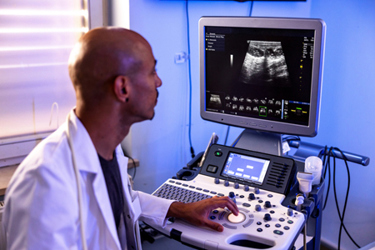Procedure For Repeated Ultrasound Guided Liver Biopsies In Non-Human Primates
By David M. Benedict, Christina Cruzen, Brett Megrath, Brian Knapp, Anthony Celori, Kasey Watson, and Kacie Woodward

Collecting biopsy samples from internal organs can be challenging, especially when multiple collections are needed, but ultrasound-guided biopsies offer an effective solution for monitoring liver changes in cynomolgus monkeys (Macaca fascicularis) over time. This method minimizes stress for the animals, reduces the risk of complications, and promotes a quick recovery. Under chemical anesthesia with a ketamine/xylazine mixture, the technician uses the ultrasound system in 2D mode to locate the liver and gallbladder before inserting a 16-gauge biopsy needle to collect a 1.5 cm liver sample. Pain management was minimal, with 0.1 mg/kg of meloxicam administered for three days post-procedure.
After conducting 342 ultrasound-guided biopsies across 189 animals, some of which received up to four biopsies over 70 days, no major issues were observed during the procedures or recovery. This technique has proven to be a safe, minimally invasive, and well-tolerated method for repeated liver biopsies in non-human primates.
Get unlimited access to:
Enter your credentials below to log in. Not yet a member of Drug Discovery Online? Subscribe today.
